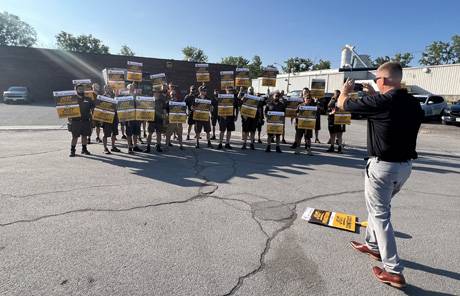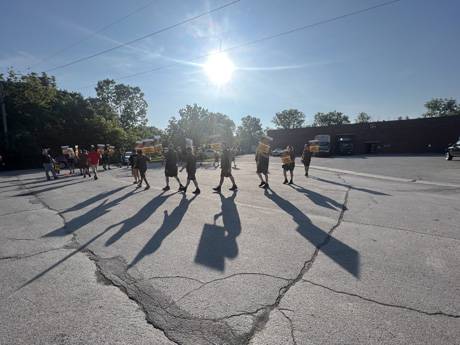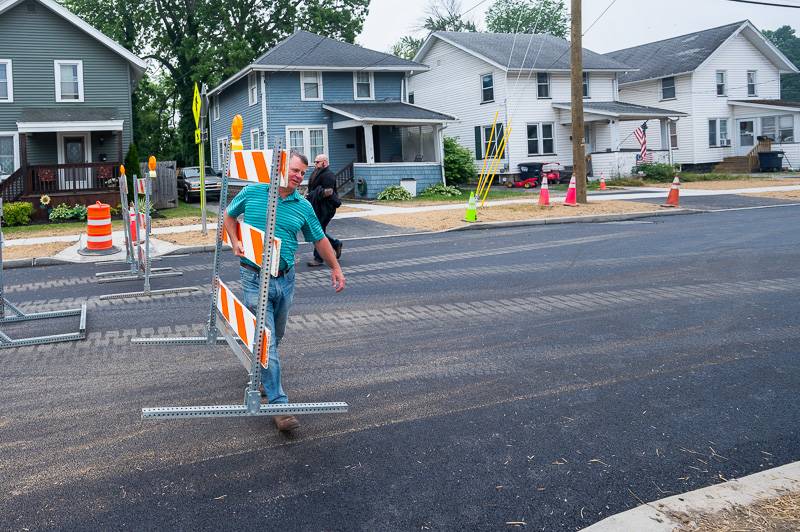City's fire station under long-awaited construction this summer

Photo by Howard Owens.
Summertime's warmer temps usually bring on road pavings, driveway sealings and roof replacements, and the city's fire department is also receiving some much-needed construction during the season, Chief Joshua Graham says.
The department's Evans Street station apron is being replaced as part of a larger renovation project that has been planned for many years and will update the station with new equipment, bathrooms and Americans with Disabilities Act-compliant amenities.
The concrete is original to the building's construction, which was done in 1977, Graham said.
"The construction that took place back then was not designed for the weight of today’s fire apparatus. Due to that fact, the concrete is cracking up and falling apart," he said to The Batavian Thursday. "The apron itself consists of tearing the only concrete out and pouring new slabs. We then have to wait until it has hardened enough to support the weight of our trucks."
That's only the beginning, he said, as the apron sets the stage for a larger indoor renovation project.
"We are renovating parts of the interior of the fire station as well. Again, the facility is original to 1977 and, as such, has only one bathroom and open showers for the firefighters," he said. "We also have a non-ADA compliant bathroom up front, which would be public use. When the project is complete, we will have three separate bathrooms with separate showers, including one ADA-compliant. We are adding a wall to separate the living space (kitchen, bunk rooms) from the rest of the station."
There will also be a new sprinkler system, updated fire alarm system, new generator and some minor cosmetic repairs, he said.
"All of these fixes are much needed, and I’m thankful to the city for seeing that they are completed," he said.
Earlier this year, City Council approved a recommendation from management to reallocate $635,000 of American Rescue Plan Act funds for upgrades at the City Fire and Bureau of Maintenance department facilities.
These two capital projects were first eyed in 2017 and were then put on hold in 2020 due to the pandemic.
“We finally got a project engineered and out to bid. It came back much higher,” City Manager Rachael Tabelski had said during that January council meeting.
She recommended taking funds previously allocated for the Cohocton Water and Austin Park playground projects and reroute them to the fire station and Bureau of Maintenance projects, and council agreed.
Graham sent out a press release on Thursday to notify the public of the apron construction to take place over the next several months and a request for visitors to use the rear door of the station during that time.
"We do not have a doorbell on the back door, so if no one is there to greet you, please call the fire station phone at 585-345-6375," he said.
In the coming weeks, as the construction crews work to replace the apron, fire department staff will be responding from the rear of the station. Please do not park anywhere near the rear bay doors, as the fire apparatus will need room to pull out and respond to calls, Graham said.
Additionally, the retired flag drop box has been temporarily moved to the rear of the station as well. It is still accessible to the public.
"I appreciate your understanding as we complete these much-needed renovations," he said.

































































